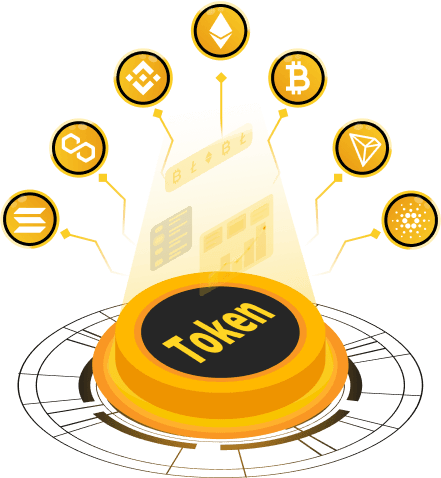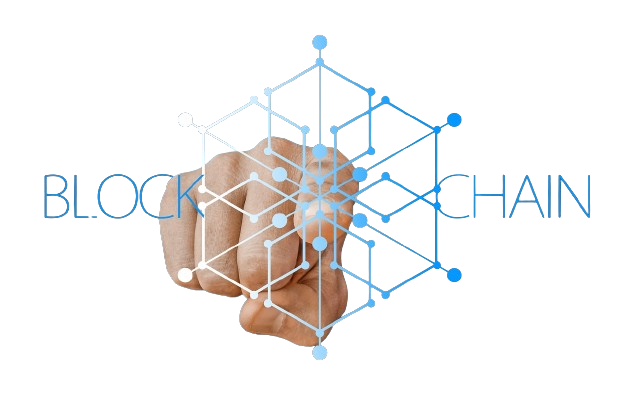Introduction
Blockchain technology has been transformative, yet it faces scalability issues and rising transaction fees as networks grow. Directed Acyclic Graphs (DAGs) emerge as a novel architecture to address these challenges, offering a pathway to faster, more efficient, and cost-effective transactions. As blockchain development company continue to innovate, understanding DAGs becomes crucial.
In this exploration, we’ll delve into the technical implementation of DAGs, analyze their impact on transaction fees, and discuss their future potential across industries. We’ll also include visual aids and real-world case studies to provide a comprehensive understanding of this emerging technology.
Unlock Finance's Future with DAG Technology Insights

The Essence of Directed Acyclic Graphs (DAGs)
A Directed Acyclic Graph, or DAG, is more than just another data structure. it’s a web-like architecture where each node connects to others in a one-way direction, never looping back. This structure enables DAGs to process multiple transactions simultaneously, unlike traditional blockchains that process transactions in a linear sequence.

Key Attributes of DAGs
- Parallel Processing- DAGs validate multiple transactions at once, enhancing throughput. This is a critical feature for blockchain development companies focused on efficiency.
- Scalability- As the network grows, so does its ability to handle more transactions, reducing congestion. This scalability is particularly attractive to blockchain development companies.
- No Mining Necessary- Without the need for miners, DAGs offer a more energy-efficient alternative, appealing to cryptocurrency wallet development company.
Technical Implementation of DAGs: Unveiling the Inner Workings
Implementing DAGs in decentralized networks requires a fundamental shift in transaction processing, validation, and security. Below, we break down the technical aspects with visual aids and real-world case studies.
1. Transaction Validation- A New Approach
In a DAG system, each transaction is a self-contained entity that references one or more previous transactions, forming edges in the graph. These edges ensure that each transaction is validated by others, eliminating the need for central validators.

Case Study- IOTA’s Tangle
IOTA, a well-known DAG-based cryptocurrency, uses a structure called the “Tangle.” Each transaction in IOTA must validate two prior transactions, creating a web of interlinked transactions. This approach enables high throughput and low fees, making IOTA ideal for Internet of Things (IoT) applications. However, IOTA has faced challenges, such as vulnerability to network attacks during low activity periods, which they have addressed by developing stronger consensus mechanisms.
2. Consensus Mechanism- Reimagined
Traditional blockchains rely on consensus mechanisms like Proof of Work (PoW) or Proof of Stake (PoS). DAGs, however, use transaction weight to determine validity, reducing the need for such heavy mechanisms. Techniques like random walks, where transactions randomly select which previous transactions to validate, further enhance security.
Case Study- Nano’s Lightweight Consensus
Nano, another DAG-based cryptocurrency, uses a block-lattice structure where each account has its own blockchain. Nano’s consensus mechanism, known as the “Principle of Least Effort,” favors the transaction that requires the least validation effort. This has led to instant, feeless transactions, making Nano particularly suitable for everyday use. Nano’s success highlights the potential for DAGs to revolutionize payment systems, but it also faces scalability challenges as user adoption grows.
3. Conflict Resolution- Navigating the Web
Conflicts in a decentralized network such as double-spending attempts are resolved differently in DAGs compared to blockchains. The network assesses the cumulative weight of the conflicting transactions, accepting the one with greater validation.
Case Study- Byteball’s Conflict Resolution
Byteball, a DAG-based platform, resolves conflicts through a combination of transaction weight and a reputation system. This dual approach ensures that transactions are both secure and trustworthy. Byteball has applied this system to create decentralized applications (dApps) with robust security, though it continues to refine its conflict resolution strategies to handle increasingly complex transaction scenarios.
4. Security in DAGs- Fortifying the Structure
Security in a DAG network is both a challenge and an opportunity. Without traditional miners or a centralized authority, DAGs rely on measures like transaction weight, reputation systems, and lightweight PoW to prevent attacks and ensure network integrity.
Security Considerations
- Sybil Attacks- DAG systems counter Sybil attacks by requiring small proofs of work or using reputation systems to validate transactions.
- Double-Spending- By validating multiple previous transactions, DAGs make it difficult to execute double-spend attacks.

Unlock Finance's Future with DAG Technology Insights

How DAGs Influence Transaction Fees
DAGs excel in reducing or eliminating transaction fees due to their unique architecture. This section explores how DAGs achieve this and their implications for various industries.
1. Eliminating the Need for Miners
DAGs do not require miners, which dramatically lowers network costs. This shift enables fee-free or low-fee transactions, appealing to both users and service providers.
Case Study- Cryptocurrency Exchange Development
For cryptocurrency exchange development companies, DAGs offer a pathway to faster and cheaper transactions. By implementing DAG-based systems, these companies can reduce operational costs and pass the savings on to users in the form of lower fees.
2. Parallelism and High Throughput
The parallel processing capabilities of DAGs mean that they can handle more transactions without the bottlenecks of traditional blockchains. This efficiency allows for reduced fees, even during high traffic periods.
3. Variable Fee Structures
DAG-based networks offer more flexible fee structures, making them suitable for a wide range of applications, from microtransactions to large-scale payments.
Example
IOTA and Nano operate with zero or minimal fees, making them ideal for frequent microtransactions. This has attracted interest from industries that rely on high-volume, low-cost transactions, such as IoT and decentralized finance (DeFi).
Challenges in Implementing DAGs
While DAGs offer numerous advantages, they also present challenges in design, scaling, and adoption. These challenges must be addressed by blockchain development company to fully realize DAGs’ potential.
1. Design Complexity
DAGs require sophisticated design strategies to ensure efficient transaction validation, consensus, and security. Blockchain development teams must carefully plan and execute these designs to maintain network integrity.
Case Study- Cryptocurrency Exchange Development
For cryptocurrency exchange development companies, DAGs offer a pathway to faster and cheaper transactions. By implementing DAG-based systems, these companies can reduce operational costs and pass the savings on to users in the form of lower fees.
2. Scaling and Network Maintenance
As a DAG network grows, maintaining efficiency and security becomes increasingly challenging. Continuous optimization is necessary to handle an expanding number of transactions without compromising performance.
3. Driving Adoption and Ecosystem Development
For DAGs to succeed, they need widespread adoption across various industries. Blockchain development companies play a crucial role in driving this adoption by integrating DAGs with existing systems and developing robust ecosystems around them.
Future Outlook- The Road Ahead for DAGs
The future of DAGs is bright, with potential applications across multiple industries. As blockchain development services continue to evolve, DAGs are likely to play a pivotal role in shaping the next generation of decentralized networks.
Potential Innovations
- Integration with AI and IoT- DAGs are well-suited for IoT applications due to their scalability and low fees. Future innovations could involve integrating DAGs with AI to automate transaction validation or manage smart contracts in IoT ecosystems.
- Cross-Industry Adoption- Beyond cryptocurrencies, DAGs could revolutionize supply chain management, healthcare, and even government services by offering efficient and secure transaction processing.
- Collaborative Ecosystems- Blockchain development companies might collaborate on creating interoperable DAG networks, allowing seamless interaction between different platforms and applications.
Speculative Future- DAGs and Emerging Technologies
Imagine a world where DAGs integrate with quantum computing, offering unprecedented speeds and security. Or consider how DAGs might evolve to support decentralized autonomous organizations (DAOs), enabling entirely new forms of governance and collaboration.
Empower YOur Project With Top-Tier Blockchain Development

Conclusion
Directed Acyclic Graphs (DAGs) represent a transformative approach to decentralized networks. By enabling parallel transaction processing, reducing reliance on miners, and slashing transaction fees, DAGs offer a scalable, efficient, and cost-effective alternative to traditional blockchains. For blockchain development companies and cryptocurrency development services, understanding and leveraging DAG technology could be key to staying competitive in an increasingly crowded market.
As DAGs continue to evolve, their potential applications across various industries will likely expand, driven by innovation and collaboration within the blockchain community. The future of decentralized networks may very well be shaped by DAGs, bringing us closer to a world where these systems are not only efficient and scalable but also accessible to all.
